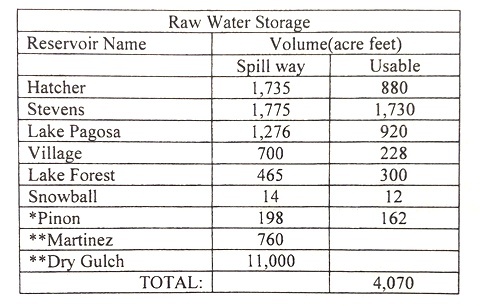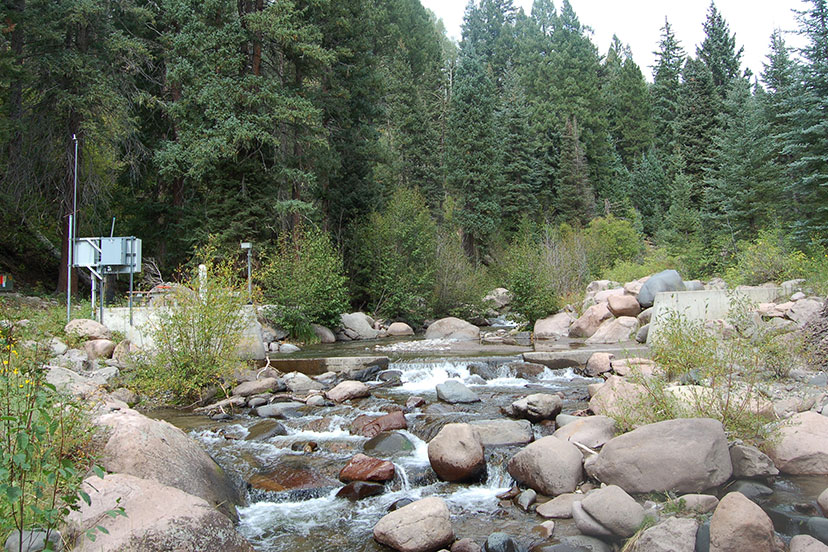Photo: The PAWSD Fourmile Creek water diversion site. This site can deliver up to 25 acre feet of water per day; in theory, about 9,600 acre feet per year.
I woke up at 4am on Monday morning, from a dream.
In the dream, the Canadian voters had just elected a new President, and he had assembled his new Cabinet members at a long table, for a press conference.
The only thing I actually remembered from the dream, upon waking up, was a confident statement made by the new President, referring to himself and his Cabinet.
“Whatever might go wrong in the future, know that we are going to hold ourselves responsible.”
An odd dream. I don’t typically dream about the President of Canada, primarily (I suppose) because Canada doesn’t have a President. They have a Prime Minister, and a Governor General, and they have a Cabinet. They also have a King: King Charles III.
But a President, Canada does not have.
Nevertheless, I took the message to heart. Those who serve the community, on elected or appointed government boards, can easily point the finger of blame, and they often do.
But they can also take responsibility for whatever goes wrong.
Things have gone wrong between the Pagosa Area Water and Sanitation District (PAWSD) and the San Juan Water Conservancy District (SJWCD), even though both districts have a goal of ensuring access to sufficient water for the people of Archuleta County and their visitors.
Things were already going seriously wrong in 2004, when the two water districts were still working happily, hand-in-hand, to plan a new water reservoir in the Dry Gulch Valley. Much of the planning was being done behind closed doors, without taxpayer approval, and the plans were based on ridiculous estimates of population growth and water demand. Bad data and misinformation were delivered on a regular basis to the two boards of directors.
When the community finally realized the extent of the fraud that had been foisted on the PAWSD customers, the Running Iron Ranch had already been purchased jointly by the two districts. The PAWSD voters began kicking out the Old Guard in 2010, and by 2013, the revolution was pretty much complete. SJWCD was evicted from the PAWSD offices, and the Dry Gulch Project was removed from PAWSD’s long-range planning documents.
The onerous Water Resource Fee PAWSD had been collecting from its customers, to pay for a $357 million reservoir project, was refunded to the folks who had paid it.
The people of Archuleta County were, however, unable to remove the directors of the San Juan Water Conservancy District, because they are appointed by a Durango judge rather than being elected.
Only one current PAWSD board member — Glenn Walsh — was serving when this divorce took place, and I believe the same can be said for the current SJWCD board. But the two current boards have inherited the animosity that arose during the divorce. The November 14 PAWSD board meeting, discussed in Part Two yesterday, revealed that the animosity is alive and well.
Something has gone wrong. Who will step up and take responsibility?
Much of the bad blood relates to misunderstandings and misplaced loyalties — as is often the case.
Disclosure: I currently serve as a volunteer member of the PAWSD board of directors, but this editorial reflects only my personal opinions and not necessarily the opinions of the PAWSD board or staff.
I ended Part Two with three questions for everyone to consider.
What is the right size for a reservoir?
Who does it serve?
And who will pay for it?
These are not simple questions to answer. But the second question, “Who does it serve?” has a partial answer:
Probably not PAWSD customers.
PAWSD has a competent, hardworking staff, and they keep accurate records. One of the things they track is the amount of water in each of our existing reservoirs. Here’s some recent, accurate data from the PAWSD staff.

Pinon Lake is used only for raw water irrigation on the Pagosa Golf Course and at nearby condominiums. Martinez Canyon and Dry Gulch do not exist, but have conditional storage rights.
So, about 3,908 acre feet of usable reservoir storage currently available for drinking water.
Over the past decade of population growth, PAWSD has sold an average of about 1,200 acre feet of treated drinking water per year.

This suggests that, if the San Juan Mountains received zero precipitation for three years — not a single drop of rain, or flake of snow — PAWSD could theoretically still meet current water demand with the existing reservoirs. For three years.
But most of the water PAWSD treats and delivers comes, not from reservoir storage, but from fresh water diversions out of the San Juan River and its tributaries.
The amount of PAWSD diversion rights is somewhat mind-boggling. 46,537 acre feet.

That’s 37 times the amount of water PAWSD sold in 2020. Not all of this water is available all year… but still…
Does PAWSD need another reservoir? Maybe not?
Do PAWSD customers want to pay for a reservoir they don’t need? Election results over the past two decades suggest they don’t.
But PAWSD customers are currently paying $250,000 a year for the 2008 Running Iron Ranch loan — for the proposed site for a reservoir they don’t want. And they still have more than $10 million left to pay on that loan, if you include the interest payments.
For a reservoir site they don’t need?
In the opposite corner of the boxing ring, we have the Challenger: San Juan Water Conservancy District.
Does the SJWCD board believe PAWSD needs a reservoir?
And does the SJWCD board want PAWSD customers to continue paying millions of dollars for a reservoir site that the customers don’t need, or want?
That would appear to be the case.

